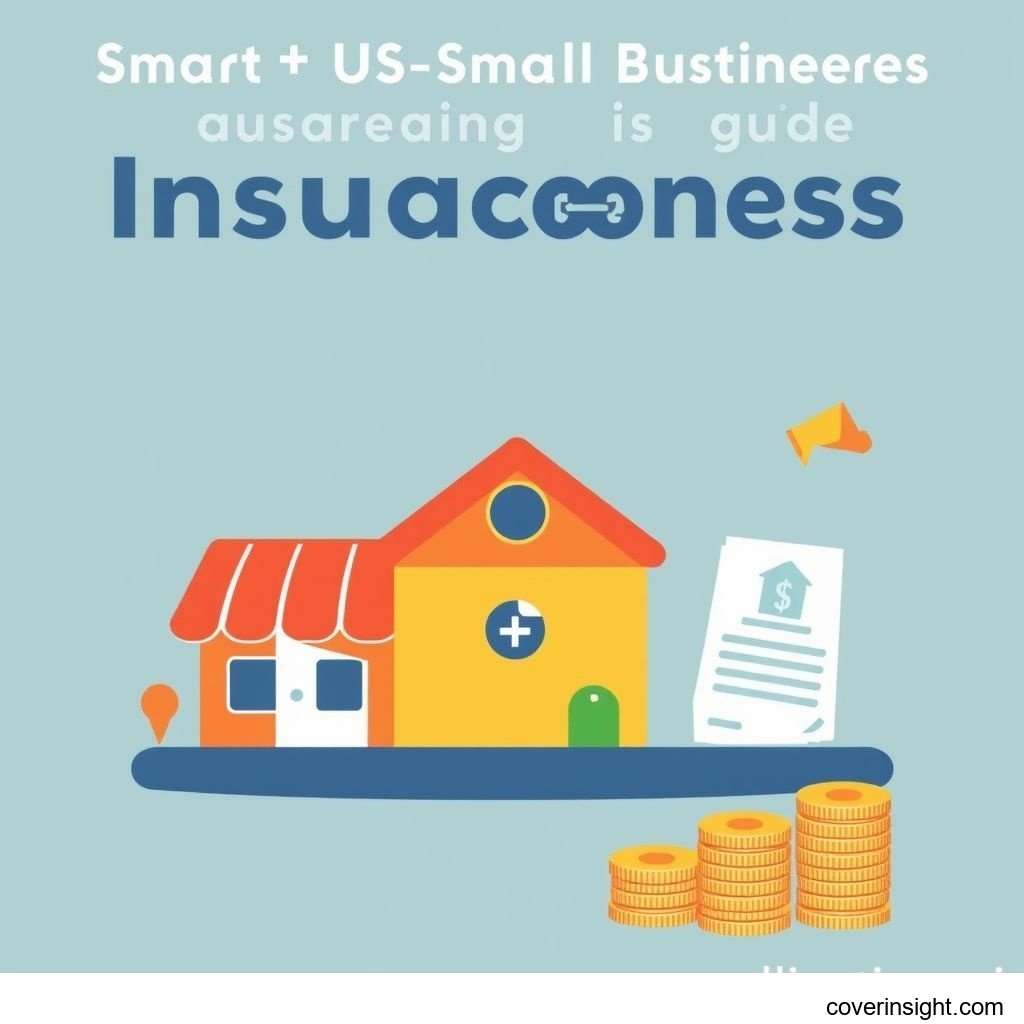Smart 2025 US Small Business Insurance Costs Guide
Introduction
Navigating the world of small business insurance in the U.S. for 2025 can feel like trying to hit a moving target. As an entrepreneur, protecting your hard-earned assets and ensuring operational continuity isn't just a smart move – it’s often a non-negotiable one. Understanding the typical small business insurance costs is crucial for budgeting and risk management. This guide aims to shed light on what to expect, how to manage expenses, and why adequate coverage is paramount in today's dynamic business landscape.
Coverage Details
What’s Included
Most small business insurance packages are designed to offer a robust safety net, covering various liabilities and risks. Typically, a foundational policy includes:
-
General Liability Insurance: This is often the cornerstone, protecting your business from claims of bodily injury, property damage, advertising injury, and personal injury that occur on your business premises or due to your operations. Think of it as your first line of defense against everyday mishaps.
-
Commercial Property Insurance: Safeguards your physical assets, including your building (if owned), equipment, inventory, and even the furniture in your office, against perils like fire, theft, and natural disasters.
-
Business Interruption Insurance: Often bundled with property insurance, this coverage helps replace lost income and cover ongoing expenses if your business has to temporarily close due to a covered property loss.
-
Workers’ Compensation Insurance: A legally mandated coverage in most states, it provides benefits to employees who suffer job-related injuries or illnesses, covering medical expenses and lost wages.
-
Professional Liability (Errors & Omissions) Insurance: Crucial for service-based businesses, it protects against claims of negligence, mistakes, or inadequate work.
-
Cyber Liability Insurance: With the increasing threat of data breaches, this coverage helps businesses mitigate the financial fallout from cyberattacks, including data recovery, notification costs, and legal fees.
For a broader understanding of various protections available, exploring general "Insurance Resources Global" can provide a valuable perspective on how different types of insurance function worldwide.
Common Exclusions
While policies offer broad protection, it’s just as important to understand what typically isn't covered. Common exclusions include:
-
Intentional Acts: Damage or injury caused by deliberate actions.
-
Poor Workmanship: Issues arising from the quality of your work itself, rather than accidental damage.
-
Acts of War or Terrorism: Though some specific policies might offer limited coverage, these are generally excluded.
-
Floods and Earthquakes: These often require separate, specialized policies, as they are typically excluded from standard commercial property insurance.
-
Wear and Tear: Gradual deterioration of property is not covered.
-
Employee Dishonesty: While a fidelity bond can cover this, it's not usually part of a standard business owner's policy.
Cost Analysis
Price Factors
The question "How much does small business insurance cost?" doesn't have a single answer, as premiums are influenced by a multitude of factors, making each business's quote unique.
-
Industry and Risk Level: A construction company will inherently face higher premiums than a graphic design studio due to the increased risks of bodily injury and property damage. The more hazardous your operations, the higher the cost.
-
Location: Premiums can vary significantly by state, city, and even neighborhood, influenced by factors like local crime rates, natural disaster risks, and state-specific regulations. For instance, data compiled by the "National Association of Insurance Commissioners" (NAIC) often highlights regional variations in premium trends and regulatory environments.
-
Business Size and Revenue: Larger businesses with more employees, higher revenues, and more extensive assets typically face higher premiums, as there's more to protect and greater potential for claims.
-
Claims History: A history of frequent or large claims will likely lead to higher premiums. Insurers view past claims as an indicator of future risk.
-
Number of Employees: Directly impacts workers' compensation and often influences general liability and professional liability costs.
-
Deductibles and Coverage Limits: Opting for a higher deductible can lower your premium, but you'll pay more out-of-pocket if a claim occurs. Conversely, higher coverage limits (the maximum an insurer will pay) will increase premiums.
-
Security Measures: Businesses with robust security systems, sprinkler systems, and safety protocols might qualify for discounts.
According to a recent report from a credible U.S. industry body, the average general liability policy for a small business in 2024 saw an estimated 4% increase in premiums, a trend expected to continue into 2025 as the market adjusts to inflation and higher claim costs.
Saving Tips
While you can't control all the factors affecting your premiums, there are several ways to potentially reduce your small business insurance costs:
-
Bundle Policies (BOP): Many insurers offer a Business Owner's Policy (BOP) that combines general liability, commercial property, and business interruption insurance at a lower rate than purchasing them separately. It's often a smart play for small to medium-sized businesses.
-
Increase Deductibles: If you have a solid emergency fund, raising your deductible can significantly lower your monthly or annual premiums. Just ensure you can comfortably afford the deductible if a claim arises.
-
Implement Risk Management: Proactive safety measures, employee training programs, and robust cybersecurity protocols can demonstrate to insurers that you're a lower risk, potentially earning you discounts.
-
Shop Around: Don't settle for the first quote. Get multiple quotes from different carriers. An independent agent can often do this for you, comparing options from various insurers. Exploring resources on a site like "US Insurance Home" can be a good starting point for finding local providers.
-
Review Coverage Annually: Your business changes, and so should your insurance. Annually review your policy to ensure you're not over-insured or under-insured.
-
Maintain a Good Claims History: As mentioned, a clean record goes a long way in keeping premiums down.
-
Ask About Discounts: Many insurers offer discounts for things like professional associations, online policy management, or going claims-free for a certain period.
FAQs
How much does small business insurance cost?
The cost of small business insurance varies widely. Many small businesses can expect to pay anywhere from $500 to $2,000 annually for a basic Business Owner's Policy (BOP), which combines general liability and property insurance. However, specialized industries or businesses with higher risks (like construction or healthcare) could pay several thousand dollars or more per year, especially when adding workers' compensation, professional liability, and cyber insurance.
What affects premiums?
Premiums are primarily affected by your industry's risk level, your business's size and revenue, location, claims history, the number of employees, and the specific coverage limits and deductibles you choose. The more risk an insurer perceives, the higher the premium.
Is it mandatory?
It depends on the type of insurance and your state. Workers' Compensation insurance is mandatory in almost every U.S. state if you have employees, though specific requirements vary. General liability and property insurance are not typically legally mandated by federal or state law, but they are often required by landlords, clients, or lenders. Operating without them is a massive gamble, leaving your business vulnerable to devastating financial losses. For detailed state-specific regulations, contacting your "State Insurance Departments" is highly recommended.
How to choose?
Choosing the right insurance involves assessing your unique risks, understanding your legal obligations, and balancing cost with comprehensive protection.
-
Assess Your Risks: What are the most significant threats to your business? (e.g., customer injuries, data breaches, property damage).
-
Understand State Requirements: Especially for workers' compensation.
-
Consult an Independent Agent: They can offer impartial advice and compare quotes from multiple carriers.
-
Read the Fine Print: Understand what’s included and excluded.
-
Balance Cost and Coverage: Don't just go for the cheapest option; ensure it adequately protects your business.
Consequences of no coverage?
Operating without adequate coverage is a high-stakes gamble. The consequences can be catastrophic:
-
Financial Ruin: A single lawsuit (e.g., a slip-and-fall, professional error, or data breach) could lead to hundreds of thousands or even millions in damages, potentially forcing your business into bankruptcy.
-
Loss of Assets: Without property insurance, fire or theft could wipe out your entire physical operation with no financial recourse.
-
Legal Penalties: If you fail to carry mandatory workers' compensation, you could face hefty fines, legal action, and even jail time in some states.
-
Loss of Trust and Reputation: A major incident that cripples your business due to lack of insurance can severely damage your reputation within the community and with potential clients.
Consider a real-world example: Mid-City Builders, a small construction firm in Phoenix, Arizona, faced a nightmare scenario when a scaffold collapsed on a job site, injuring a pedestrian. Despite safety protocols, it was an accident. Their General Liability policy, which cost them around $3,500 annually, stepped in to cover the pedestrian's extensive medical bills and subsequent legal fees, totaling over $200,000. Without that coverage, Mid-City Builders would have likely been forced to declare bankruptcy, putting their 15 employees out of work. It was a stark reminder that even with careful planning, accidents happen, and insurance is the ultimate backstop.
Author Insight & Experience
Based on my experience living in the U.S. and observing the small business landscape, one common pitfall I've noticed is the tendency for entrepreneurs to view insurance as merely another expense to minimize. While cost-saving is always a good practice, skimping on essential coverage can be a classic case of being "penny wise and pound foolish." The U.S. legal system is complex, and even an unfounded claim can incur significant legal defense costs. As someone who's seen businesses thrive and unfortunately, sometimes fail, adequate insurance is less about "if" you'll need it, and more about "when." It's an investment in peace of mind and, crucially, in your business's long-term survival. Don't let the immediate small business insurance costs overshadow the potential, much larger, costs of being unprotected.








Comments